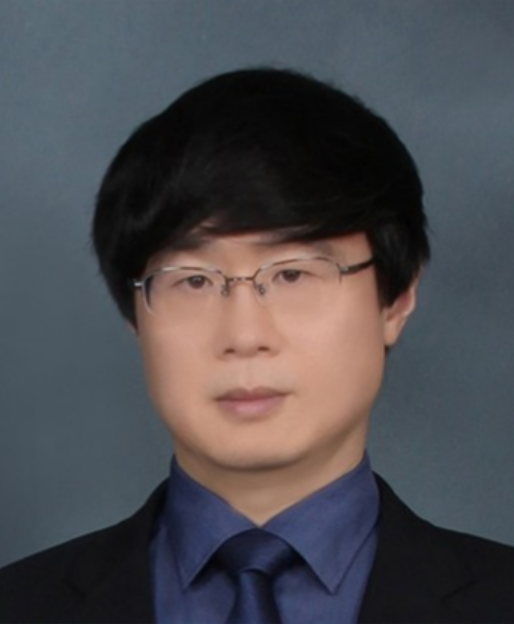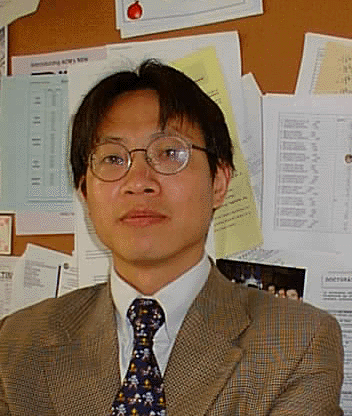
| Professor Asoke NandiIEEE Fellow, Brunel University of London, UKProfessor Nandi received his PhD in Physics from the University of Cambridge (Trinity College). He held academic positions in several universities, including Oxford, Imperial College London, Strathclyde, and Liverpool as well as Finland Distinguished Professorship. In 2013 he joined Brunel University of London.
In 1983 Professor Nandi co-discovered the three fundamental particles known as W+, W− and Z0, providing the evidence for the unification of the electromagnetic and weak forces, for which the Nobel Committee for Physics in 1984 awarded the prize to two of his team leaders for their decisive contributions. His current research interests lie in signal processing and machine learning, with applications to machine health monitoring, functional magnetic resonance data, gene expression data, communications, and biomedical data. He made fundamental theoretical and algorithmic contributions to many aspects of signal processing and machine learning. He has much expertise in “Big Data”. Professor Nandi has authored over 650 technical publications, including 320 journal papers as well as six books, entitled Image Segmentation: Principles, Techniques, and Applications (Wiley, 2022), Condition Monitoring with Vibration Signals: Compressive Sampling and Learning Algorithms for Rotating Machines (Wiley, 2020), Automatic Modulation Classification: Principles, Algorithms and Applications (Wiley, 2015), Integrative Cluster Analysis in Bioinformatics (Wiley, 2015), Blind Estimation Using Higher-Order Statistics (Springer, 1999), and Automatic Modulation Recognition of Communications Signals (Springer, 1996). The H-index of his publications is 91 (Google Scholar) and ERDOS number is 2.
Professor Nandi is a Fellow of the Royal Academy of Engineering and a Fellow of six other institutions including the IEEE. In 2023, he has been honoured by the Academia Europaea and the Academia Scientiarum et Artium Europaea. He has received many awards, including the IEEE Transactions on Radiation and Plasma Medical Sciences Best Paper Award in 2025, the IEEE Heinrich Hertz Award in 2012, the Glory of Bengal Award for his outstanding achievements in scientific research in 2010, the Water Arbitration Prize of the Institution of Mechanical Engineers in 1999, and the Mountbatten Premium of the Institution of Electrical Engineers in 1998. Professor Nandi was an IEEE Distinguished Lecturer (EMBS, 2018-2019). Speech Title: Time-series representations of polynomials leading to better understanding and accurate estimations Abstract:Data modelling goes back to 19th century when Gauss and Legendre invented the least-squares method for polynomials. Time-series representations followed later. Data modelling is a fast-growing topic in 21st century. This presentation will offer novel, insightful, and recent results. For example, all polynomials of degree q can be represented by a time-series of the same order with a constant. One major distinction of this formulation lies in its ability to describe any qth degree polynomial data with only one unknown in stark contrast to the (q + 1) unknowns needed in a polynomial model. From noisy data, the degree of a polynomial, the additive noise as well as the polynomial coefficient corresponding to the highest polynomial degree can be estimated more accurately than the current methods, without using a polynomial model. |
| Professor Jong-Moon Chung, IEEE FellowYonsei University, KoreaJong-Moon Chung (IEEE Fellow) received the B.S. and M.S. degrees in electronic engineering from Yonsei University (Seoul, South Korea) and the Ph.D. degree in electrical engineering from the Pennsylvania State University (University Park, PA, USA). Since 2005, he has been a Professor with the School of Electrical and Electronic Engineering at Yonsei University, where he is also the Associate Dean of the College of Engineering and a Professor with the Department of Emergency Medicine, College of Medicine. From 1997 to 1999, he was an Assistant Professor and Instructor with the Department of Electrical Engineering, Pennsylvania State University. From 2000 to 2005, he was a tenured Associate Professor with the School of Electrical and Computer Engineering, Oklahoma State University. He has published the books "Emerging Secure Networks, Blockchains and Smart Contract Technologies" (Springer ©2024, https://doi.org/10.1007/978-3-031-65866-2) and "Emerging Metaverse XR and Video Multimedia Technologies" (Apress ©2023, https://doi.org/10.1007/978-1-4842-8928-0_2) based on invitations from Springer Nature. He is currently a Vice President of the IEEE Product Safety Engineering Society (PSES), Director of the Asia & Pacific Region of the IEEE Consumer Technology Society (CTSoc), Senior Editor of the IEEE Transactions on Consumer Electronics, Section Editor of the Wiley ETRI Journal, and Chair Editor-in-Chief of the KSII Transactions on Internet and Information Systems (TIIS). He serves as an IEEE Distinguished Lecturer for CTSoc and PSES. He is an IEEE Fellow and member of the National Academy of Engineering of Korea (NAEK) and the IEEE Eta Kappa Nu (HKN) honor society. Speech Title: XR Disaster Management Systems with 5G & 6G NTN Edge Computing Supported Data Mining Technologies Abstract: In this keynote speech, extended reality (XR) based emergency and disaster management systems that use mixed reality (MR) computer vision technology are introduced. Two South Korea government XR emergency and disaster management (and training) systems are introduced, which include the Ministry of Interior & Safety's 'Augmented Reality (AR) Emergency Response Training System' and the National Fire Agency's 'XR Flagship Project System,' which use various computer vision technologies supported by digital twin (DT) modeling as well as artificial intelligence (AI) and generative AI (GenAI) computing. The 5G mobile network is used to support real-time edge computing-based data mining and provide disaster evolution predictions as well as recommend recovery strategies. The difficulties and challenges in making these systems will be discussed and the limitations of 5G mobile networks will be explained. The new expected features of future 6G mobile networks (which include non-terrestrial networks (NTNs)) and how the new capabilities can enhance future real-time computer vision and data mining systems will be described. |
| Professor Liming ChenUniversity of Lyon, FranceLiming Chen is a Distinguished Professor in the Department of Mathematics and Computer Science at École Centrale de Lyon, University of Lyon, France, and a senior member of the Institut Universitaire de France (IUF), holding the Chair of Innovation since 2022. He received his BSc in Mathematics and Computer Science from the University of Nantes in 1984, and his MSc and PhD in Computer Science from the University Pierre and Marie Curie (Paris 6) in 1986 and 1989, respectively. Prof. Chen began his academic career as an Associate Professor at the Université de Technologie de Compiègne, before joining École Centrale de Lyon as a full professor in 1998. He has also held industrial positions, notably as Chief Scientific Officer of Avivias and as multimedia expert for France Telecom R&D China. From 2007 to 2016, he served as Head of the Department of Mathematics and Computer Science at École Centrale de Lyon. His research focuses on computer vision, machine learning, and robotics. He has made notable contributions on face analysis and recognition both in 2D and 3D, from facial representation learning to 3D facial modeling, including a generative 3D-GAN that enables identity-preserving facial synthesis under varying expressions, poses, and lighting. His more recent work introduces nonlinear 3D facial models based on implicit neural representations, achieving highly detailed and controllable facial geometry. Notably, through a collaborative research work on the von Mises-Fisher mixture model for deep face representation with Idemia, a world leading company in biometrics, Prof. Chen's research directly contributed to the development of IDEMIA’s facial recognition algorithms. These algorithms achieved rank #1 in accuracy in the NIST Face Recognition Vendor Test (FRVT) 1:N evaluation, confirming IDEMIA’s leadership in biometric technology for large-scale governmental and security applications, and exemplifies the successful transfer of academic research to industrial deployment at scale. Prof. Chen’s group also addressed a longstanding challenge in facial biometric quality assessment. Their model-based facial occlusion detection method (FG 2023), developed in collaboration with Germany’s Federal Office for Information Security (BSI), is a core component of the Open Source Image Quality (OFIQ) framework and now serves as the reference implementation for ISO/IEC 29794-5. Prof. Chen has authored over 300 peer-reviewed publications, supervised more than 40 PhD students, and led numerous EU and national research projects. He has guest-edited several high profile journal special issues and serves as Area Editor for Computer Vision and Image Understanding. He is a Senior Member of the IEEE.. Speech Title: The journey of face analysis and recognition for security related applications: progress and challenges Abstract: Over last years, face analysis and recognition have evolved from a major research topics in computer vision and machine learning to central components of modern security and surveillance systems. In this talk, I will share my personal and scientific journey through this dynamic field, charting the progress made in face detection, representation learning, and recognition under unconstrained conditions. Drawing on my experience leading interdisciplinary research efforts at the intersection of computer vision, machine learning, and human-centered computing, I will highlight key milestones—ranging from early geometric and appearance-based models to the advent of deep learning. The talk will explore the dual pressures of performance and societal impact, particularly in applications related to public safety, border control, and digital identity verification. I will discuss technical challenges such as cross-domain generalization, spoofing and adversarial robustness. Real-world deployments demand not only accuracy but also fairness, and resilience—factors often overlooked in benchmark-driven research. By reflecting on collaborative work across academia and industry, I aim to provide a forward-looking perspective on how face analysis can be responsibly integrated into security infrastructure. The talk will conclude with a discussion on open research directions and the need for ethical frameworks and international dialogue in deploying face recognition technologies at scale. |
| Professor Maozhen LiBrunel University of London, UKMaozhen Li received the Ph.D. degree from the Institute of Software, Chinese Academy of Sciences, Beijing, China, in 1997. He did his Post-Doctoral research in the Department of Computer Science at Cardiff University UK in 1999-2002. He is a Professor with the Department of Electronic and Electrical Engineering, Brunel University of London, UK. His main research interests include high-performance computing, big data analytics, and intelligent systems with applications to smart grids, smart manufacturing and smart cities. He has about 240 research publications in these areas, including four books. His book entitled “The Grid: Core Technologies” was introduced by Tsinghua publisher as a classical textbook on Grid computing. He is a Fellow of the British Computer Society (BCS) and the Institute of Engineering and Technology (IET). He has served over 30 IEEE conferences and serves on the editorial board for a number of journals. His research work on Big Data was shortlisted by Computing in May 2018 for BIG DATA EXCELLENCE AWARDS in the category of Most Innovative Big Data Solution. His recent research on a computation efficient AI model outperforms the two pioneering works in this field – GhostNet and MobileNet. This work is now available on IEEE Transactions on Neural Networks and Learning Systems. Speech Title: Interpretation and Computation Efficiency in Deep Neural Networks Abstract: The past two decades have witnessed a tremendous success of AI applications in many areas mainly due to the rapid development of sophisticated deep neural networks (DNNs). However, DNNs normally work in a black-box style, making it challenging for deployment of DNNs in life critical situations such as autonomous driving where safety has to be guaranteed. This talk starts with a brief review on interpretation methods of DNNs based on which it presents SA-CAM, generating self-attention activation maps for visual interpretations of CNNs. Further down the line, this talk focuses on computation efficient lightweight AI models which can potentially be deployed on resource constrained mobile devices. Specifically, it presents CEModule, a computation efficient module for lightweight CNNs through model interpretation. Towards the end, this talk touches upon computation intensive heavyweight AI models like ChatGPT and brings up some discussions on their challenges. |



